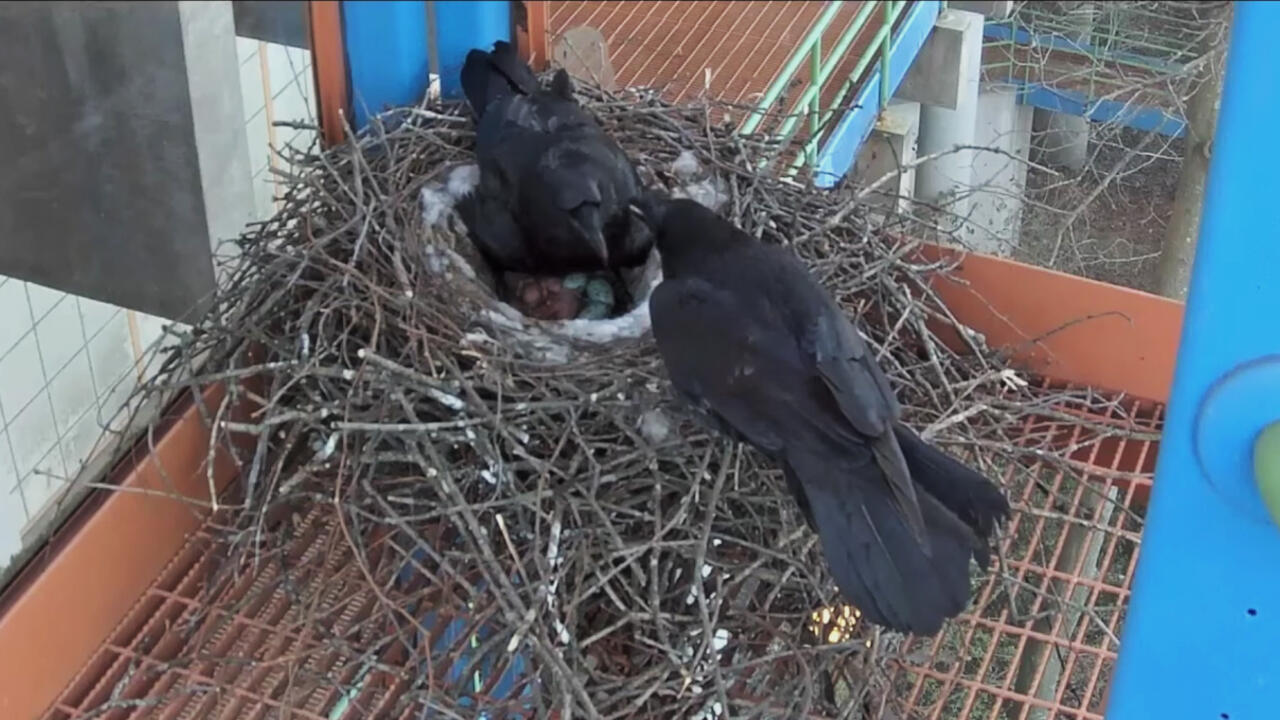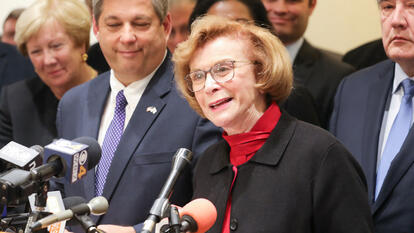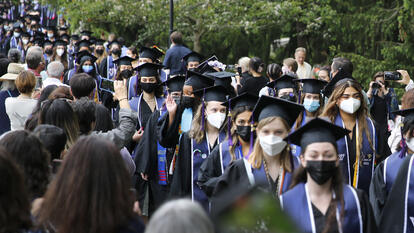Raven Henry’s Death Draws Attention to Bird Behaviors and Safety

It was with sadness that Ravencam viewers learned last week that Henry, the male of the raven couple who made their nest in a glass-enclosed fire escape at the Science Center, was killed in a collision with a window at the Schneider Center. The live web feed of the ravens has been suspended in order to allow Pauline, the female, to adjust to her new responsibilities as the single parent of hatching nestlings.
Henry and Pauline, named for Wellesley’s founders, the Durants, in a collegewide contest, were discovered by Lauren Johnson ’16 in October 2013. Since then, 24/7 video recordings made during the spring nestings have provided unique data for researchers both on and off campus. Johnson coauthored an article with Professor of Biological Sciences Nicholas Rodenhouse for the journal Bird Observer based on data gathered during the first year the ravens were filmed.
Rodenhouse spoke with us about the possible impact of Henry’s death.
Q: The Ravencam broadcast was stopped because of the uncertainty of how Pauline would fare. How is she doing?
Nicholas Rodenhouse: It seemed very unlikely that Pauline would be able to continue with the nesting attempt on her own. However, she has greatly exceeded my expectations and continued to incubate her eggs. The first egg hatched this morning. We can hope that she is able to sustain it, but with one more egg hatching each day she may have an impossible job ahead of her. If [food is available nearby] then she may be able to raise one or two nestlings on her own. [Update: As of this writing, two more nestlings have hatched, and all three currently appear to be healthy.]
I can find no information about how a raven might mourn, but they do mate for life. However, when a mate is lost, a new mate will be obtained. I expect that Pauline will have a new mate by next fall.
Q: Can we help? Why don’t we feed them?
Rodenhouse: Pauline and Henry chose to nest at an academic research institution, which is bound by very different constraints than private individuals. The first constraints are legal. Any “experimenting” that I would do with this brood, such as supplemental feeding, would require written permission from the U.S. Fish and Wildlife Service, because the Common Raven is covered under the Migratory Bird Treaty Act, the College’s Institutional Animal Care and Use Committee, and the Department of Fish and Game, Commonwealth of Massachusetts. These permits have to be applied for many months in advance. There is no possibility of having them in days or weeks.
Q: What are the other kinds of constraints?
Rodenhouse: Ethical. Should we encourage wild birds to nest in areas that are actually or potentially harmful to them? According the species account in Birds of North America online, Common Ravens can live up to 13 years in the wild. Henry died well short of that, probably at about six years of age. We know that three of the four fledglings from the 2016 brood died on or near campus in the first few weeks after fledging.
If we feed Pauline, it will encourage her to stay in this area, but is that the best choice? Should we feed young birds in an area where they will likely die relatively soon after fledging? The campus seemed to be an idea place for ravens when our observations began in 2014, but we have learned much since then. The literature for crows, close relatives of ravens, in urban areas is much more extensive than for ravens. This literature indicates that crows face many challenges in urban areas, including inbreeding, disease, and pollution as well as accidental death. Should we encourage Pauline to continue breeding in this high-risk environment?
Q: What can we do to help the ravens?
Rodenhouse: Henry’s death has spurred us to examine our campus closely for ways to make it safe for all kinds of birds. Meetings about what can be done and where we should act first are in progress.
I hope that all of those who watched the Ravencam will now act to make their homes and workplaces safe for birds. Information about making windows bird-safe may be found at birds.cornell.edu, birdsavers.com, and the U.S. Fish and Wildlife Service website. People can help by doing the following:
- Relocating bird feeders or other attractants to property areas with fewer windows.
- Installing screening or taut netting at least two to three inches away from windows so that incoming birds bounce off of them.
- Obscuring reflections in the glass of trees, sky, or the birds themselves (which they may interpret as intruders to their territory) with opaque film, strips of tape or Mylar, or reflective decals.
- Installing blinds, wind curtains, or shutters that hide plants, light, or other attractants inside the property.



